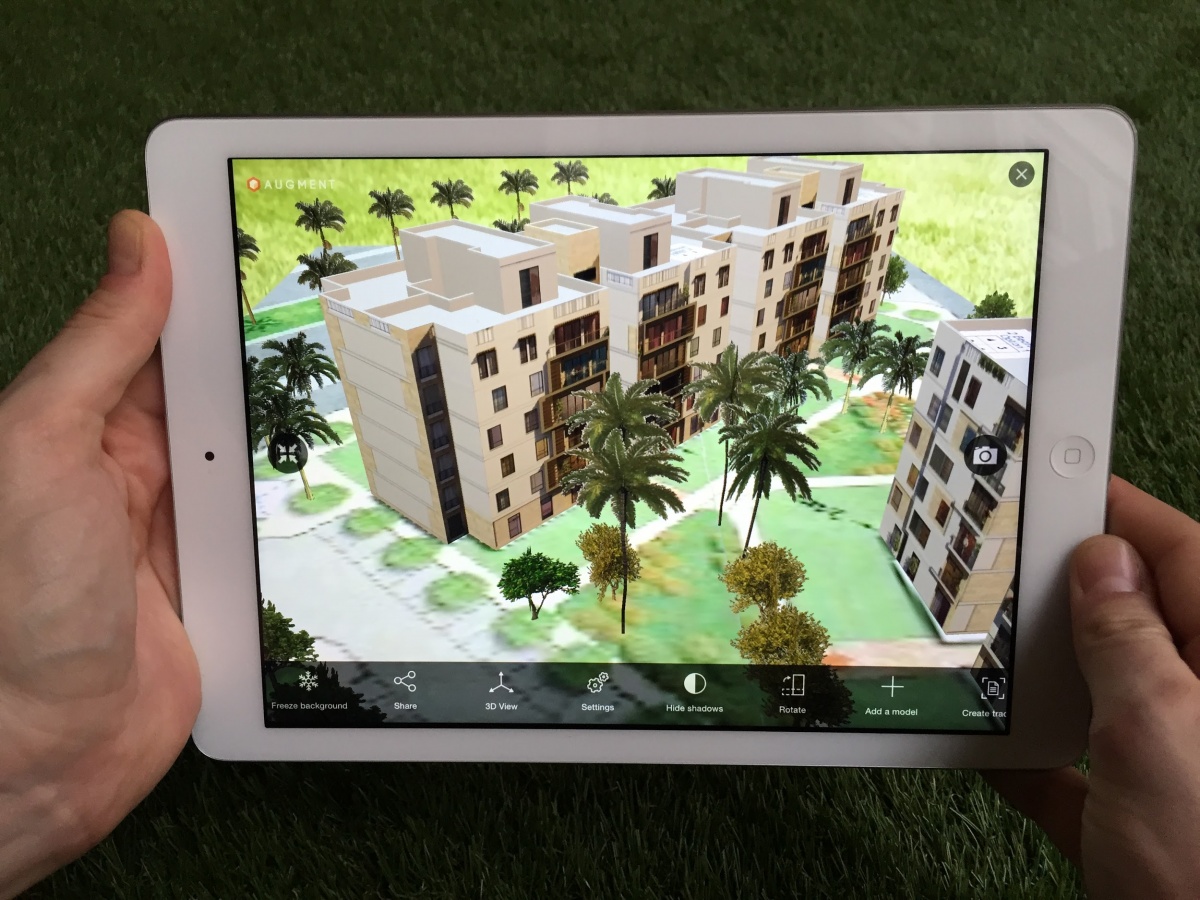Building on BIM: Which Technologies are Advancing Design?
Over the last 20 years, Building Information Modeling (BIM) has become universally known as the software that disrupted architecture and construction. After all, the adoption of BIM in commercial construction marked the dawn of a new era in design and stakeholder collaboration. Yet, in today’s ever-evolving digital landscape, we can be sure that new technologies and innovations to advance BIM are underway.

As advances in technology, the Internet of Things, and the ease of integration with other processes progress, BIM applications are also evolving. Here are a few examples:
 Augmented Reality enables architects and designers to more easily communicate design intent. Image courtesy of www.augment.com.
Augmented Reality enables architects and designers to more easily communicate design intent. Image courtesy of www.augment.com.
Augmented reality can be used with BIM to coordinate multiple construction documents on site, especially 2D and 3D CAD drawings, or conduct virtual walk-throughs. “Architects can actually interact with their virtual models, making ‘what-if’ design scenarios much easier to manipulate, rather than physical models,” says technology consultant Dennis Williams. “Augmented reality headsets are already being used by project managers for on-site walkthroughs to see virtual BIM overlays.”
Computer-assisted manufacturing technologies, coupled with BIM processes, can be used to make ready-to-install modules and components for just-in-time delivery. BIM actually expands the design options for prefabrication because, regardless of how unique the component is, if it is constructible in the BIM model, it can be prefabricated and installed.
 According to www.engineering.com, materials like 3D-printed concrete could replace prefabricated parts on a building site. Image courtesy of Andrey Rudenko/YouTube
According to www.engineering.com, materials like 3D-printed concrete could replace prefabricated parts on a building site. Image courtesy of Andrey Rudenko/YouTube
Additive manufacturing (AM) and 3D printing are now advanced enough to 3D-print building components on site, which can replace the need for prefabricated units. An enabling factor for more AM in BIM is the evolving existence of 3D-printable concrete. “As it becomes more plausible as a building material, the need for prefabricated components will fall drastically,” says BIM expert Erin Green on www.engineering.com.
Integrated project delivery is an emerging process that utilizes BIM to improve workflow and communication. By connecting people, processes and plans together early on, successful project delivery is more likely and the information used for BIM is improved. This includes more use of cloud computing. For example, Autodesk’s BIM 360 Field is construction field management software with cloud capabilities that makes field data accessible to off-site groups. “Cloud data storage, in relation to BIM, does much more than allowing multiple teams to collaborate,” says Williams. “For example, imagine models being worked on simultaneously by field agents and off-site project managers looking to catch any underlying issues before the build is set.”
BIM, Big Data and the Internet of Things (IoT)
Expanded BIM applications are having a profound impact on the way buildings are designed, constructed, and even operated in the near future. For example, according to Daniel Davis, a New York City-based architect and researcher, clients are asking architects for more than just drawing sets. “They are eyeing the data-rich BIM models that firms use to document projects as a way to supply data for downstream applications, such as facilities management,” says Davis. “There is a growing expectation that architects will produce datasets, such as the Construction-Operations Building Information Exchange (COBie) spreadsheet, as part of their regular deliverables. The COBie spreadsheet is essentially a list of building assets—such as chairs and HVAC systems—that the owner can then use to manage the facility.”
More data will be available to BIM through the Internet of Things. Buildings are becoming increasingly connected, with systems that provide data monitoring and remote access. Integration with the IoT will increase the capabilities of future BIM systems, greatly improving facility management and building automation, which in turn will “open avenues for big data and more sustainable systems that match that building’s particular circumstances for optimal performance,” says Williams.
Davis expects that the most profound changes that will result from the abundance of data will be procedural in nature. For example, how will firms verify the data they produce? How will they exchange data with project partners? “Legally, who will be responsible for this data?” asks Davis. “What services can be sold around this data? How can firms learn from data? Will firms need to employ a data scientist? For companies that are willing to tackle these questions, data will afford a profound opportunity to quantify the value they are bringing to their clients.”
Mark Crawford is a Madison, Wisconsin-based freelance writer who specializes in business, science, technology, and manufacturing.
- Category:
- Industry
- Manufacturing
Some opinions expressed in this article may be those of a contributing author and not necessarily Gray.